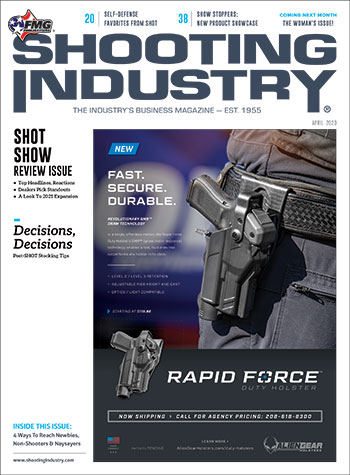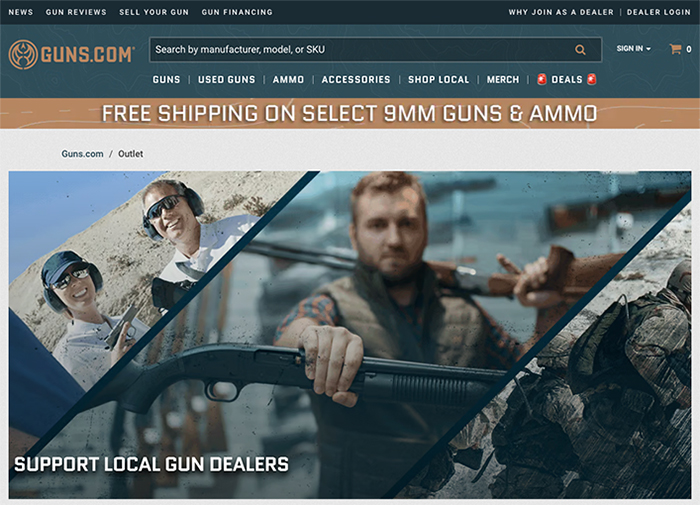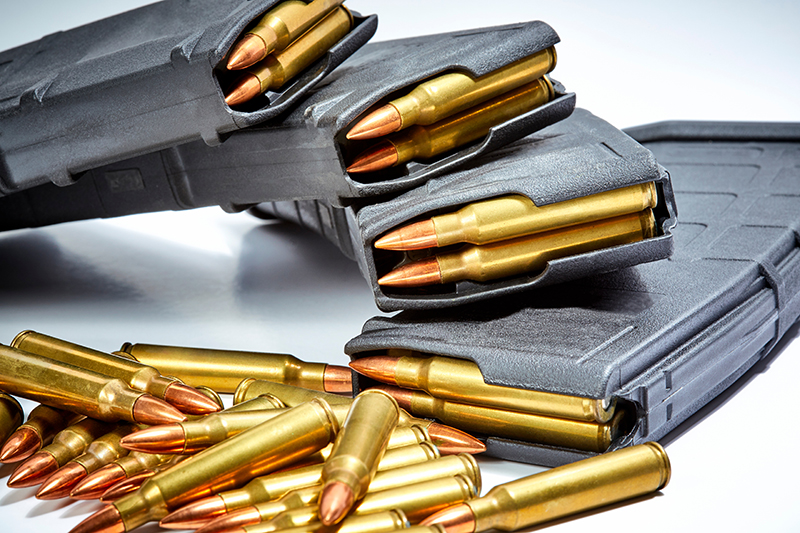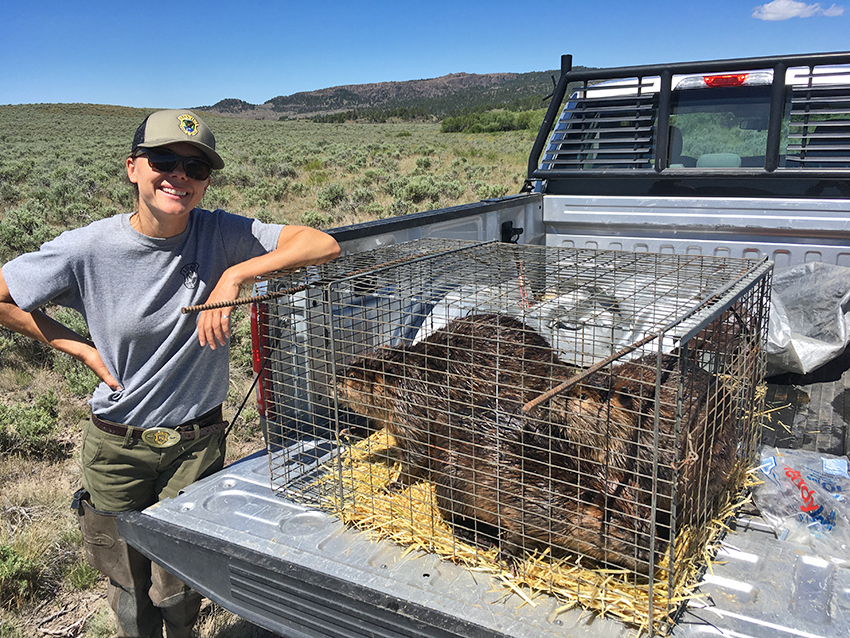4 Ways To Reach Newbies, Non-Shooters & Naysayers
The easiest customer to reach is the one nearest you — that is, the one who already loves firearms, shooting, hunting or the associated gear. As you already know, it’s considerably more difficult to reach those who are farther out — those unfamiliar with firearms but maybe interested in learning more, those who are uninterested and, most difficult, those antagonistic to the idea of shooting. They’re the newbies, non-shooters and the naysayers, respectively. Despite the pool of potential customers found in the nearest customers (i.e., those easiest to market to) there are millions more out there. Here are four ideas for reaching them.
1. Be ready to invest some personal time.
As with many areas of life, people may be more inclined to try something new — even something perceived as difficult or uncomfortable — when someone takes the time to invite them personally and help them with the experience. Think back to the first time you handled and discharged a firearm. Perhaps it was a parent or other family member showing you his or her firearm, how it worked, how to hold it, where to aim it and so on. You probably got an earful of instruction on the rules of firearm safety and maybe even tips on range etiquette. When it was time to squeeze the trigger and fire that first round, I’m guessing the trusted person was nearby, guiding, explaining and making sure you didn’t do anything stupid. Someone took time to provide you with some personalized instruction and guided experience.
Take this experience and think of ways you can replicate it for a newbie, non-shooter or naysayer. With the newbie, it’s easier because he or she wants to know, learn and do. The other two types of people are more difficult, of course, but don’t count them out of your marketing efforts.
Often these people can be won over by careful, patient, personal instruction. Maybe some thoughtful conversations about the positive effects of hunting on the environment or the good resulting from someone carrying a concealed handgun will help. Arguably, a very effective means — if you can convince the non-shooter or the naysayer accordingly — is a trip to a shooting range so he or she can safely and responsibly get the feel for properly handling and discharging a firearm. An experienced range officer can be a great asset here, helping remind everyone of gun safety rules while helping with gun handling techniques, aiming and more.
You might be able to provide plenty of facts and information but it’s likely the experience, personalized to them, that will win them over. This is the personal side of marketing.
2. Be prepared to answer very basic questions or rebut very silly arguments.
As funny and pointed as some Facebook memes can be about the shooting sports, Second Amendment rights or the historical place of firearms, they’re probably not the means of converting a newbie, non-shooter or naysayer to the category of responsible, supportive firearms user. While those communications have their place, a more effective means of persuasion lies within your ability to patiently and helpfully answer their basic questions about shooting and firearms. You may even need to be the one to instigate the conversation, thoughtfully and kindly making genuine inquiries about a person’s beliefs, experiences and predispositions. Helping someone think through all the nuances of responsible firearms use is not a small deal and it likely will require multiple conversations.
You might be able to provide plenty of facts and information but it’s likely
the experience, personalized to them, that will win them over.
The key is to try to enter their frame of mind — to see and hear things how they have been seeing and hearing them for who knows how long. Sure, bring all facts and rationale to bear, but do so in a way that addresses the person’s questions in a careful manner. In other words, don’t overwhelm them with everything all at once. Share your opinions but present more facts.
Of course, it’s much easier to trek through a conversation with a newbie or a non-shooter than it is with a naysayer.
Naysayers may be filled with inaccurate media hype, emotionally based arguments and other uninformed predispositions. In dealing with this person, avoid personal attacks and demeaning or condescending words. Instead, be known for being willing to discuss shooting and firearms in a thoughtful, rational, calm conversation. Even if they don’t see it today, at least you’ll have left the door open for another conversation to occur in the future. This is the long game of personal marketing.
3. Be willing to delegate points 1 and 2 to other trusted advocates.
At this point, you may be bemoaning the fact you don’t have the time (on your own) to do this kind of marketing more than, say, a couple times a year. After all, you’ve got a business to run. Fair enough. This is why you need a team of trusted advocates.
Take a look at family and friends who share the same passions and interests or coworkers who are mature and excel interpersonally. Call a meeting, lay out this vision and ask for their help in the enterprise of engaging some of the newbies, non-shooters and naysayers in your realm — for the purpose of making sure they have the facts, a chance to engage in some Q&A and an opportunity for a visit to a range. Turn trusted advocates loose, but set a time to meet again and share stories.
You may find out there’s a particular piece of propaganda affecting your local area. Perhaps groupthink is thwarting business. Or you might learn people generally have the same questions and need the same answers. You might decide to pull one advisor out of a conversation and put him or her into another — one more fitting a particular approach or aptitude. In any case, delegate. Divide and conquer.
At the right time, get trusted advocates to find trusted advocates of their own and help them own this vision and engage. This is personal marketing made more efficient.
4. Be prepared for rejection, but be willing to reengage.
Despite your careful efforts following ideas 1, 2 and 3, there will be some newbies, non-shooters or naysayers unwilling to move toward greater adoption of shooting and firearms and all the underlying ideas of freedom, responsibility and safety that go with this area. And it means they’re likely not going to be customers of your store or organization. Don’t take any rejection personally; it’s possible they’re just not ready and need more time to think through matters.
As for you, decide to plod on, looking for others who may need help working these things out in conversation. Leave the conversation well, with a friendly reminder for them to reach out at any time. Sometime down the road, the newbie and non-shooter may be the first ones to return. You may never see the naysayer again. In any case, be willing to engage in meaningful conversation, treat them with respect and kindness, disagree and carefully point out the dangers of not thinking through these things well and graciously part ways.
You never know when someone might return, not only with a better understanding of shooting and firearms but also as a potential customer. This is just basic marketing — knowing you won’t get 100% return on your efforts, but you’ll put 100% into each one, no matter how long it may take to see a return.





